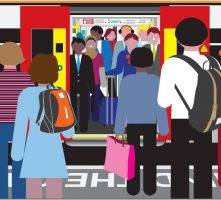October 10, 2016
Just a quarter of workers would tell employers about mental ill health 0
Almost half of UK workers (44 percent) know a colleague who has had to give up work because of stress, while more than a third of people (36 percent) say that colleagues have complained about feeling stressed to their employer, but received no support. As a result, most people (56 percent) don’t feel comfortable talking about depression or stress in the workplace. The fourth annual Employee Insight Report from Capita Employee Benefits, released to coincide with World Mental Health Day today (October 10) suggests that stigmas remain and companies should be doing more to encourage their workers to open up about mental health issues. The findings reveal that just 33 percent would feel comfortable talking to their employer if they have a mental health issue, like depression; 75 percent of respondents said they have felt stressed at work over the last 12 months but only 20 percent have taken time off work because of stress.
























 Fifteen million UK internet users have undertaken a ‘digital detox’ in a bid to strike a healthier balance between technology and life beyond the screen, according to a new Ofcom study. The study of around 2,500 people suggests that our reliance on the internet is affecting people’s personal and working lives, leading many to seek time away from the web to spend time with friends and family. Ofcom’s
Fifteen million UK internet users have undertaken a ‘digital detox’ in a bid to strike a healthier balance between technology and life beyond the screen, according to a new Ofcom study. The study of around 2,500 people suggests that our reliance on the internet is affecting people’s personal and working lives, leading many to seek time away from the web to spend time with friends and family. Ofcom’s 









